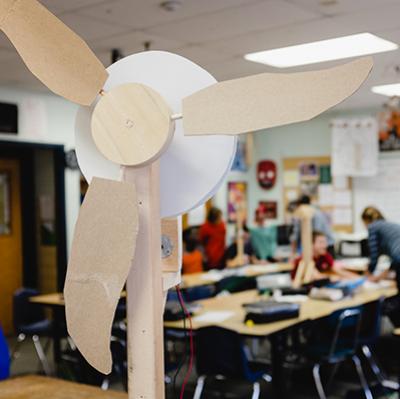This practice is designed to deepen learners’ sensitivity to design through drawing, observing, questioning, and collaborating.

This practice is designed to deepen learners’ sensitivity to design through drawing, observing, questioning, and collaborating.


This practice first encourages learners to observe the world around them and look for design, “in the wild,” taking a broad inventory of the designs they notice. Then it asks them to focus in on one object or system to consider the designer’s perspective or to propose redesign ideas.

Esta rutina primero apoya el pensamiento divergente, a medida que los estudiantes piensan en nuevas posibilidades para un objeto o sistema; luego apoya el pensamiento convergente, a medida que los estudiantes deciden la manera más efectiva para construir, manipular, re/diseñar o alterar un objeto o un sistema.

Educator Tatum Omari examines the system of educator collaborations and partnerships.

这个思考模式鼓励学生能够慢下来,仔细观察其中一个系统。通过这样帮助学生更好地认识具体系统里无论是直接或间接相关的人物,学生也会注意到系统里任何一点变化,也许都会有意无意地影响到系统的其它方面。

Students from King Middle School in Portland, Maine, explain the importance of looking closely in a maker-centered classroom.
Video by Alex Coppola

Agency by Design research assistant Sarah May explores the complex nature of working with qualitative data based on her experiences collaboratively coding and analyzing AbD’s interview transcripts.

Agency by Design project manager Jen Ryan describes her experience discussing the “maker mind” at TEDxDirigo.

Inicialmente, essa rotina estimula o pensamento divergente, à medida que os estudantes pensam em novas possibilidades para um objeto ou um sistema; depois, o pensamento convergente é encorajado, à medida que os estudantes decidem a maneira mais eficaz de construir, explorar, re/desenhar ou hackear esse objeto ou esse sistema.